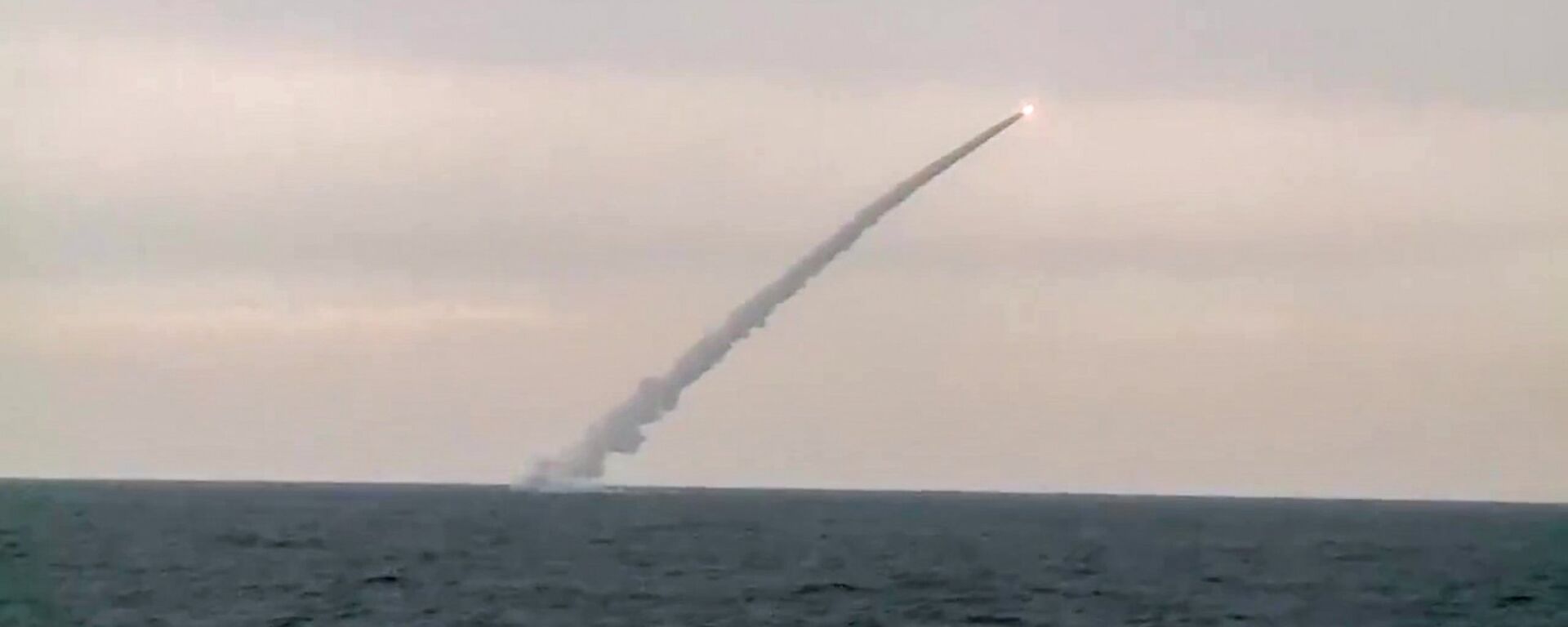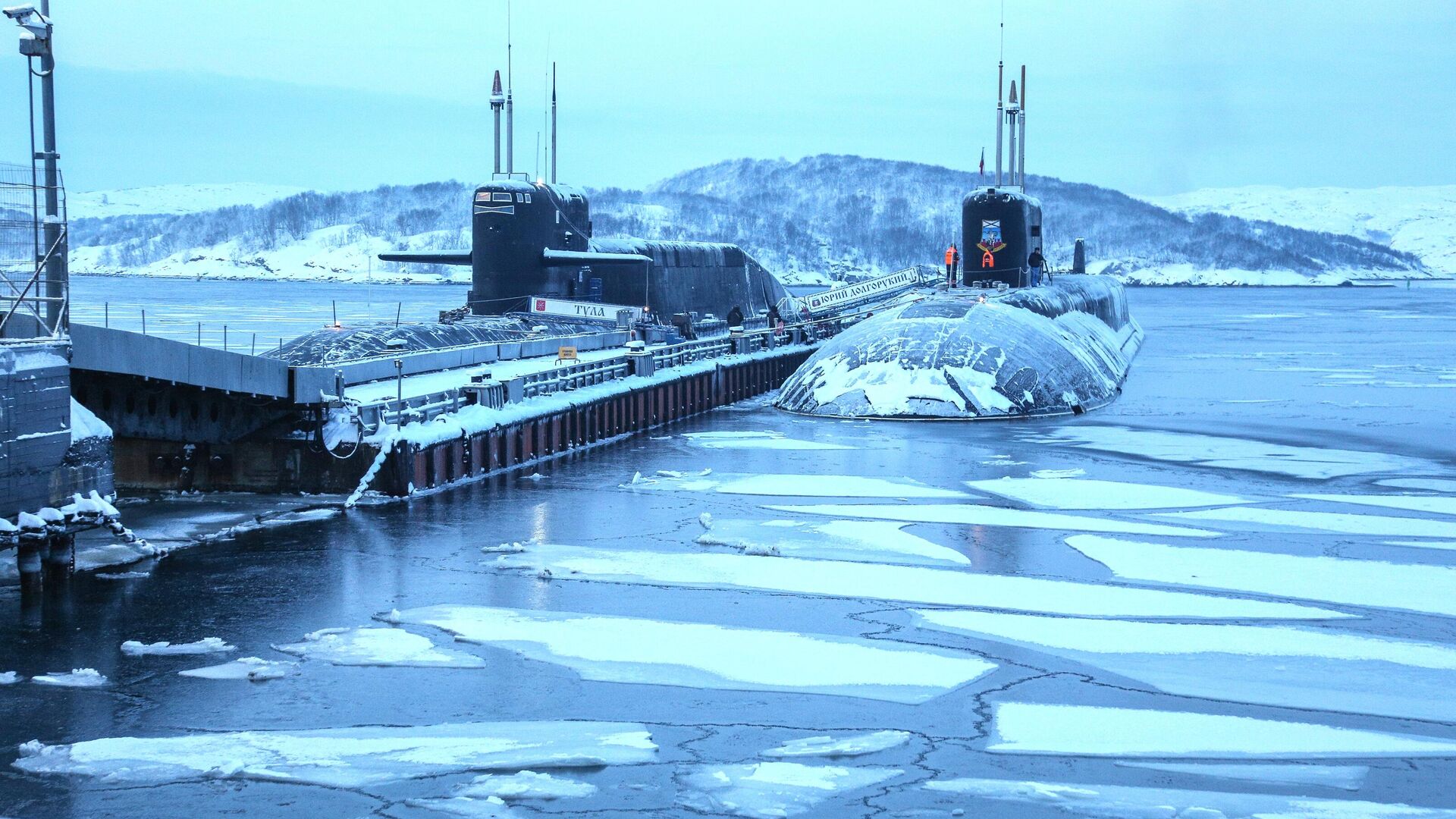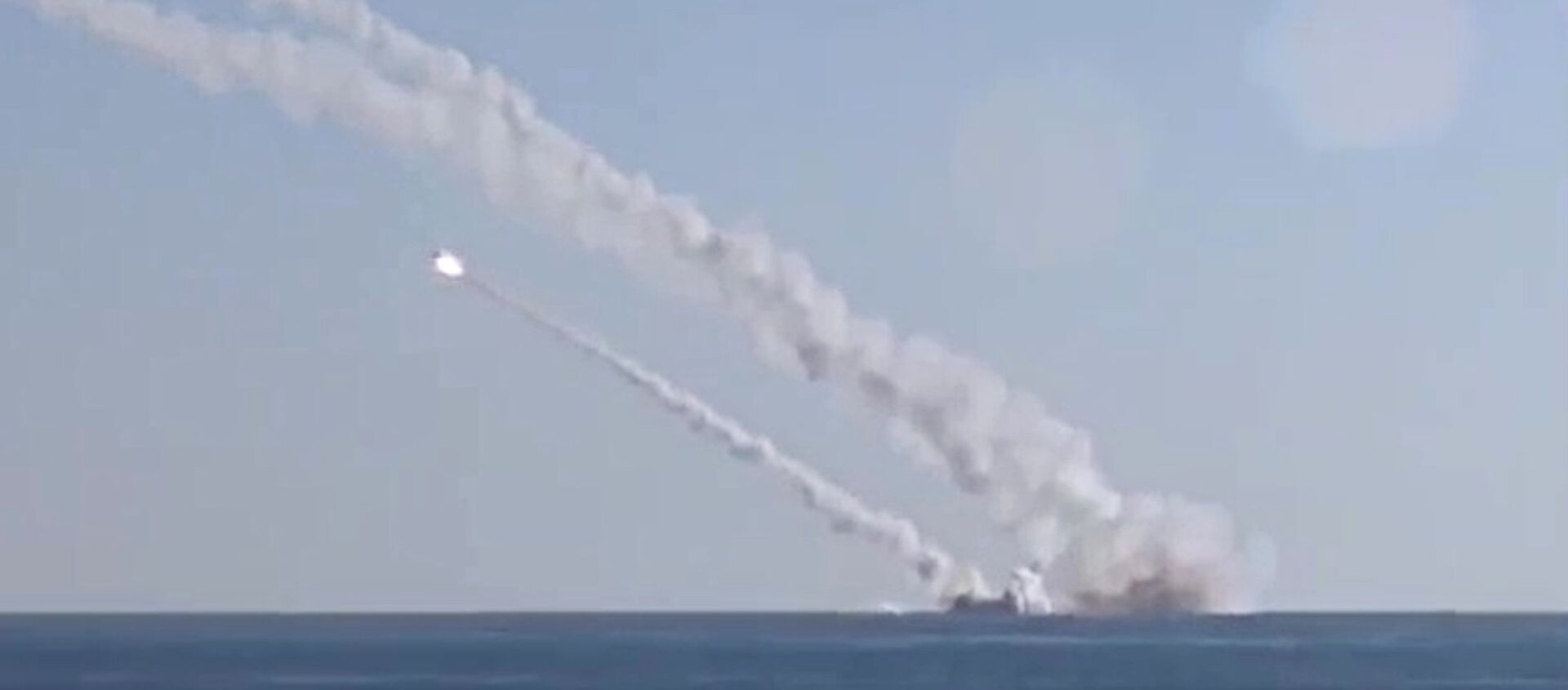https://sputnikglobe.com/20221205/how-many-nuclear-submarines-does-russia-have-1105034535.html
How Many Nuclear Submarines Does Russia Have?
How Many Nuclear Submarines Does Russia Have?
Sputnik International
How significant is Russia’s nuclear sub fleet? The short answer is: Significant enough to give Pentagon war planners headaches.
2022-12-05T06:41+0000
2022-12-05T06:41+0000
2022-12-19T15:56+0000
submarine
nuclear submarines
russia
soviet union
nuclear
nuclear missile
ballistic missile
russian military
russian navy
russian northern fleet
https://cdn1.img.sputnikglobe.com/img/07e6/0c/04/1105034210_0:0:3211:1807_1920x0_80_0_0_e31570e2720b6ab8ae9bfc8dffc2c520.jpg
Approximately 576 warheads, or about one third of Russia’s total deployed arsenal of 1,588 strategic nukes, are stationed on board the country’s ballistic missile submarine fleet.How Many Ballistic Missile Subs Does Russia Have?Warheads are split into multiple independent reentry vehicle (MIRV)-equipped missiles across 10 boomer subs. These include five of the new Borei and Borei-A class (formally Project 955 and Project 955A, NATO reporting name Dolgorukiy), commissioned in the 2010s and early 2020s, and five older Project 667BDRM Delfin (NATO reporting name Delta IV) subs, which were completed between 1981 and 1992, respectively. Borei and Borei-A series boats are armed with 16 RSM-56 Bulava submarine-launched ballistic missiles (SLBMs), with 6-10 MIRVs apiece. These missiles entered into service in 2018 after nearly two decades of difficult development, and have a destructive power of between 100 and 150 kilotons of TNT (for comparison, the American atom bomb that destroyed Hiroshima in 1945 had the TNT equivalent of about 15-20 kilotons). Bulavas have a confirmed operational range of up to 9,300 km.Delfins are armed with Sineva and Layner SLBMs of the R-29 family of strategic missiles. The original R-29 design entered into service with the Soviet Navy all the way back in 1974, but has been upgraded repeatedly over the decades to extend its range and add MIRV capabilities. Sineva and Layner missiles have an operational flight range of up to 11,500 km, and are armed with between 4 and 12 MIRV warheads, with firepower of between 100 and 500 kilotons.All five Delfins are part of the Russian Northern Fleet, while the Boreis and Borei-As are divided between the Pacific Fleet (three boats) and Northern Fleet (two boats), respectively.The concept of having a naval prong in a nuclear triad is centered on the principle of mutually-assured destruction. That means, hypothetically, that if a massed attack were launched against Russia using either conventional cruise or nuclear weapons, its Borei and Delfin subs, stationed far out of enemy range and cloaked in the "fog of war" of the world’s oceans, could retaliate instantly. This, it is reasoned, is enough of an argument to dissuade any enemy attempt to try to either annihilate Russia’s ground-based nuclear weapons, or decapitate its decision-making centers.How Many Nuclear-Powered Attack Subs Does Russia Have?Along with its ballistic missile-armed nuclear subs, the Russian Navy is equipped with 15 nuclear-powered attack subs, 10 nuclear-powered cruise missile subs, and a special nuclear-powered sub designed to carry a next-gen nuclear-powered and armed torpedo. But more on that later.Russia’s attack sub fleet includes two Project 945A Kondors (NATO reporting name Sierra II), two Project 671RTMK Shchukas (NATO reporting name Victor III), and 11 Project 971 Shchuka-B subs (NATO reporting name Akula). These subs are divided between the Northern and Pacific Fleets (10 and 5 boats, respectively). All but two of the vessels were built between 1990 and 1996, but have undergone refits, including new torpedoes, new surface-to-air missiles, new sonar, and upgraded EW and decoy systems.Russia’s attack subs, both nuclear-powered and diesel-electric, are known among NATO seamen for their tendency to cause headaches for commanders, occasionally disappearing from scopes while stalking alliance fleets on the high seas.Russia’s cruise missile sub fleet includes seven Project 949A Antey (NATO reporting name Oscar II) and three newer Project 885 and 885M Yasen and Yasen-M boats. The Anteys were commissioned between 1988 and 1996, and are split between the Pacific and Northern Fleets (two in the former, five in the latter). The Yasens (NATO reporting name Severodvinsk) were commissioned between 2014 and 2021, with two serving in the Northern Fleet and one in the Pacific Fleet, respectively.In addition to standard torpedo tubes for anti-ship and anti-sub operations, cruise missile subs carry anti-ship and land attack cruise missiles, designed to engage targets ranging from entire carrier groups to ground-based encampments deep inland. Yasen-class subs carry up to 32 Oniks anti-ship cruise missiles (operational range between 600 and 800 km) or Kalibr multipurpose missiles. Kalibrs, developed in the mid-1980s, have a range between 50 and 2,500 km, depending on the modification, and can also be fitted with nuclear warheads. The Anteys carry 24 P-700 Granit anti-ship cruise missiles, each equipped with 750 kg of conventional explosives and capable of flying up to 625 km.What’s the Poseidon Torpedo?The K-329 Belgorod is a modified Antey-class sub fitted to carry the Poseidon – an unmanned underwater vehicle created by the Rubin Design Bureau and designed to detonate a conventional or nuclear charge off an enemy coastal area. Powered by a nuclear reactor, the autonomous torpedo essentially has an unlimited range. Like the other next-gen weapons unveiled by Russia’s president in a 2018 address to lawmakers, the Poseidon is designed to preserve the global strategic balance of forces amid US efforts to rip up arms treaties and experiment with dangerous "decapitation strike" plans such as the Prompt Global Strike initiative.
https://sputnikglobe.com/20220801/putin-says-there-can-be-no-winners-in-nuclear-war-it-must-never-be-unleashed-1098004635.html
https://sputnikglobe.com/20160320/russia-subs-missiles-1036614250.html
https://sputnikglobe.com/20190214/us-coyotes-kalibr-missiles-russia-1072430806.html
https://sputnikglobe.com/20201114/state-department-fears-russias-poseidon-drones-could-swallow-us-cities-with-radioactive-tsunamis-1081167205.html
russia
soviet union
Sputnik International
feedback@sputniknews.com
+74956456601
MIA „Rossiya Segodnya“
2022
News
en_EN
Sputnik International
feedback@sputniknews.com
+74956456601
MIA „Rossiya Segodnya“
Nuclear submarine fleets of the leading countries of the world
Sputnik International
Nuclear submarine fleets of the leading countries of the world
2022-12-05T06:41+0000
true
PT3M51S
Sputnik International
feedback@sputniknews.com
+74956456601
MIA „Rossiya Segodnya“
russian nuclear submarine, nuclear submarine, how many nuclear submarine does russia have, how many boomer submarines does russia have, how many nuclear attack submarines does russia have, nuclear-powered sub, nuclear sub, sub, nuclear, northern fleet, pacific fleet, russian navy, strategic deterrent
russian nuclear submarine, nuclear submarine, how many nuclear submarine does russia have, how many boomer submarines does russia have, how many nuclear attack submarines does russia have, nuclear-powered sub, nuclear sub, sub, nuclear, northern fleet, pacific fleet, russian navy, strategic deterrent
How Many Nuclear Submarines Does Russia Have?
06:41 GMT 05.12.2022 (Updated: 15:56 GMT 19.12.2022) Longread
The naval prong of Russia’s nuclear triad made news last week after media reported that an Air Force Il-80 Doomsday Plane successfully communicated with submerged strategic missile subs using a special towed antenna. How significant is Russia’s nuclear sub fleet? The short answer is: significant enough to give Pentagon war planners headaches.
Approximately
576 warheads, or about one third of Russia’s total deployed arsenal of 1,588 strategic nukes, are stationed on board the country’s ballistic missile submarine fleet.
How Many Ballistic Missile Subs Does Russia Have?
Warheads are split into multiple independent reentry vehicle (MIRV)-equipped missiles across 10 boomer subs. These include five of the new Borei and Borei-A class (formally Project 955 and Project 955A, NATO reporting name Dolgorukiy), commissioned in the 2010s and early 2020s, and five older Project 667BDRM Delfin (NATO reporting name Delta IV) subs, which were completed between 1981 and 1992, respectively.
Borei and Borei-A series boats are armed with 16 RSM-56
Bulava submarine-launched ballistic missiles (SLBMs), with 6-10 MIRVs apiece. These missiles entered into service in 2018 after nearly two decades of difficult development, and have a destructive power of between 100 and 150 kilotons of TNT (for comparison, the American atom bomb that destroyed Hiroshima in 1945 had the TNT equivalent of about 15-20 kilotons). Bulavas have a confirmed operational range of up to 9,300 km.
Delfins are armed with
Sineva and Layner SLBMs of the R-29 family of strategic missiles. The original R-29 design entered into service with the Soviet Navy all the way back in 1974, but has been upgraded repeatedly over the decades to extend its range and add MIRV capabilities. Sineva and Layner missiles have an operational flight range of up to 11,500 km, and are armed with between 4 and 12 MIRV warheads, with firepower of between 100 and 500 kilotons.
All five Delfins are part of the Russian Northern Fleet, while the Boreis and Borei-As are divided between the Pacific Fleet (three boats) and Northern Fleet (two boats), respectively.
The concept of having a naval prong in a nuclear triad is centered on the principle of
mutually-assured destruction. That means, hypothetically, that if a massed attack were launched against Russia using either conventional cruise or nuclear weapons, its Borei and Delfin subs, stationed far out of enemy range and cloaked in the "fog of war" of the world’s oceans, could retaliate instantly.
This, it is reasoned, is enough of an argument to dissuade any enemy attempt to try to either annihilate Russia’s ground-based nuclear weapons, or decapitate its decision-making centers.How Many Nuclear-Powered Attack Subs Does Russia Have?
Along with its ballistic missile-armed nuclear subs, the Russian Navy is equipped with 15 nuclear-powered attack subs, 10 nuclear-powered cruise missile subs, and a special nuclear-powered sub designed to carry a next-gen nuclear-powered and armed torpedo. But more on that later.
Russia’s attack sub fleet includes two Project 945A Kondors (NATO reporting name Sierra II), two Project 671RTMK Shchukas (NATO reporting name Victor III), and 11 Project 971 Shchuka-B subs (NATO reporting name Akula). These subs are divided between the Northern and Pacific Fleets (10 and 5 boats, respectively). All but two of the vessels were built between 1990 and 1996, but have undergone refits, including new torpedoes, new surface-to-air missiles, new sonar, and upgraded EW and decoy systems.
Russia’s attack subs, both nuclear-powered and diesel-electric, are known among NATO seamen for their tendency to
cause headaches for commanders, occasionally disappearing from scopes while
stalking alliance fleets on the high seas.
Russia’s cruise missile sub fleet includes seven Project 949A Antey (NATO reporting name Oscar II) and three newer Project 885 and 885M Yasen and Yasen-M boats. The Anteys were commissioned between 1988 and 1996, and are split between the Pacific and Northern Fleets (two in the former, five in the latter). The Yasens (NATO reporting name Severodvinsk) were commissioned between 2014 and 2021, with two serving in the Northern Fleet and one in the Pacific Fleet, respectively.
In addition to standard torpedo tubes for anti-ship and anti-sub operations, cruise missile subs carry anti-ship and land attack cruise missiles, designed to engage targets ranging from entire carrier groups to ground-based encampments deep inland. Yasen-class subs carry up to 32 Oniks anti-ship cruise missiles (operational range between 600 and 800 km) or Kalibr multipurpose missiles. Kalibrs, developed in the mid-1980s, have a range between 50 and 2,500 km, depending on the modification, and can also be fitted with nuclear warheads. The Anteys carry 24 P-700 Granit anti-ship cruise missiles, each equipped with 750 kg of conventional explosives and capable of flying up to 625 km.

14 February 2019, 18:57 GMT
What’s the Poseidon Torpedo?
The K-329 Belgorod is a modified Antey-class sub fitted to carry the Poseidon – an unmanned underwater vehicle created by the Rubin Design Bureau and designed to detonate a conventional or nuclear charge off an enemy coastal area. Powered by a nuclear reactor, the autonomous torpedo essentially has an unlimited range. Like the other next-gen weapons unveiled by Russia’s president in a 2018 address to lawmakers, the Poseidon is designed to preserve the global strategic balance of forces amid US efforts to rip up arms treaties and experiment with dangerous "decapitation strike" plans such as the Prompt Global Strike initiative.

14 November 2020, 15:07 GMT





